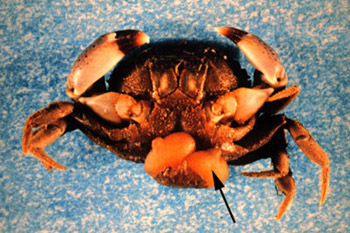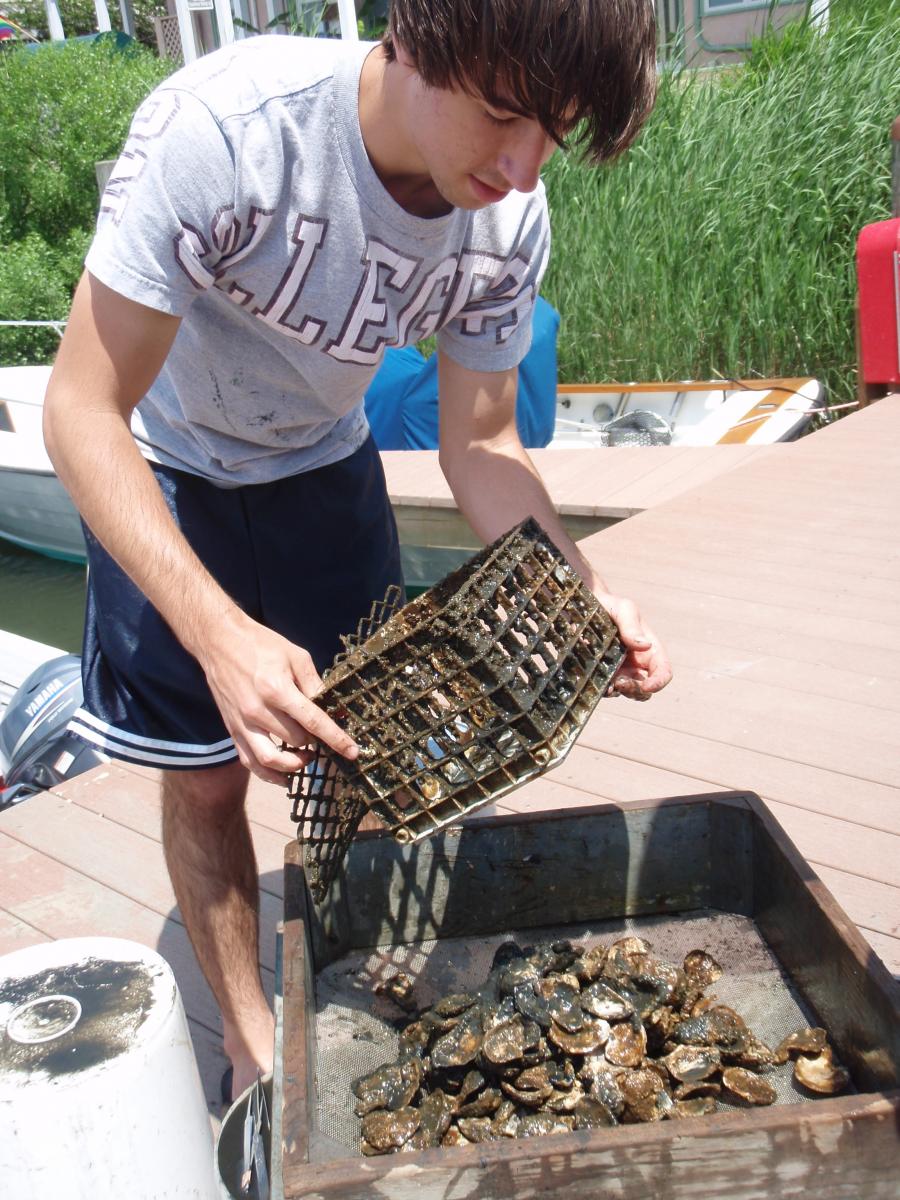Sep 3, 2012

An introduced parasite is affecting native mud crabs in Chesapeake Bay. The parasite Loxothylacus panopaei (Loxo for short) is a type of barnacle, but looks and acts nothing like the typical barnacles growing on rocks along the shoreline. Loxo is exceptionally modified, with a highly evolved life cycle tailored for its life as a crab parasite. As a larva, Loxo is free-swimming and looks like a typical barnacle larva. The female larva infects a recently molted crab by burying into the carapace. Once inside she undergoes a series of physiological and morphological changes and assumes control over the host crab, controlling major functions such as molting and reproduction. If this weren’t bad enough, Loxo also compromises the crab’s immune system. After a time Loxo grows into a reproducing adult and forms small sacs (reproductive bodies) that emerge through the abdomen of the crab, usually after the crab molts. After fertilization by a free-swimming male Loxo, the sacs are filled with of thousands of larvae that are released into the water to seek out a new crab host. This process eliminates the crab’s ability to reproduce and results in the crab caring for the developing larvae of the parasite.

Loxo are native to the Gulf of Mexico, the Caribbean, and parts of Florida and parasitize several species of mud crabs throughout this range. The first discovery of the parasite in Chesapeake Bay was in 1964 on the native White-fingered Mud Crab (Rhithropanopeus harrisii) in the York River. The parasite is now common in much of the Bay, but the population and abundance varies greatly between years. Mud crabs are easily transported with oysters, and Loxo was likely transported to the Chesapeake with mud crabs caught up in shipments of oysters from the Gulf of Mexico.

Intern Kristin Maglies and SERC biologist Jessica Morris sorting through the oyster shell picking out all of the mud crabs. Photo by Monaca Noble Researchers at the Smithsonian Environmental Research Center (SERC) having been studying the prevalence of Loxo in populations of the White-fingered Mud Crab, R. harrisii, since the 1990s in hopes of understanding how this introduced parasite affects the mud crab population. The White-fingered Mud Crab is native to and abundant in Chesapeake Bay. Starting in 2003, Dr Gregory Ruiz and others have collected mud crabs every summer from ten sites in Maryland including sites near Queenstown, Centerville, Oxford, Aqualand (near the Governor Harry W. Nice Memorial Bridge), Combs Creek, Broomes Island, Harrington Harbor, Deale, Corn Island and SERC. At each site, crabs are collected in habitat collectors, or crab condos, which are small plastic crates filled with dead oyster shells that sit on the surface of the sediment. These crates stay in the water for two months, during which time mud crabs take up residence between the oyster shells. After two months, each crate is pulled up and the crabs are hand-collected from the oyster shell habitat. Back in the laboratory these crabs are measured, sexed, and examined for outward signs of the Loxo parasite.
Recently Dr. Amy Fowler, a SERC post-doctoral fellow, examined data collected since 2003 and found that the Loxo parasite is very abundant some years and but nearly absent in others. This trend is probably influenced by environmental factors, most likely salinity and temperature. To further investigate this, Dr. Fowler is conducting targeted experiments to determine why the population is fluctuating. These experiments should help her understand if there is an impact of temperature and salinity on the physiology of the various stages of both host and parasite, both independently and together. This is a perfect model species and system for ecological study, as it allows for both long-term studies to learn how populations change over time and targeted experiments to determine why the change is occurring.



